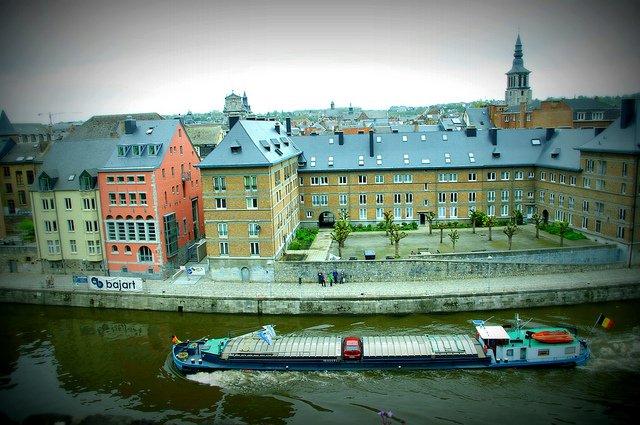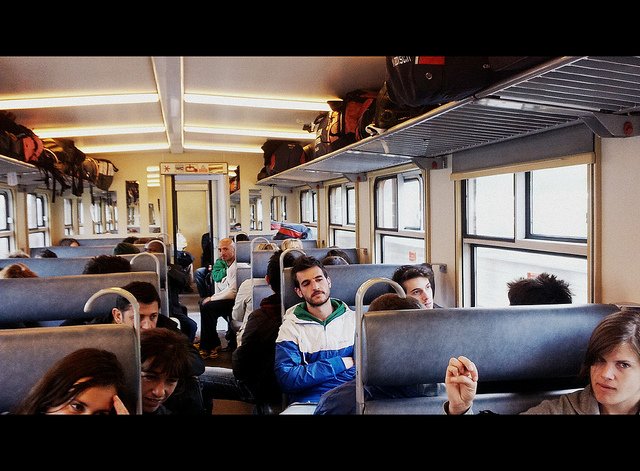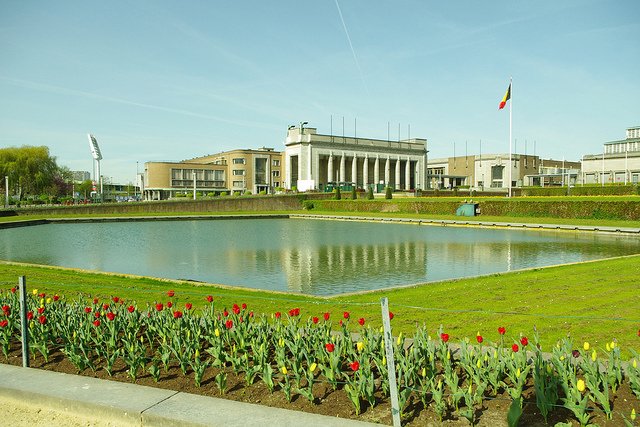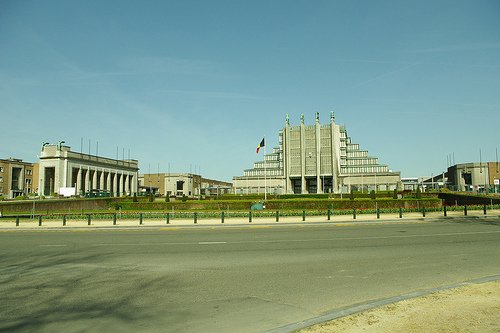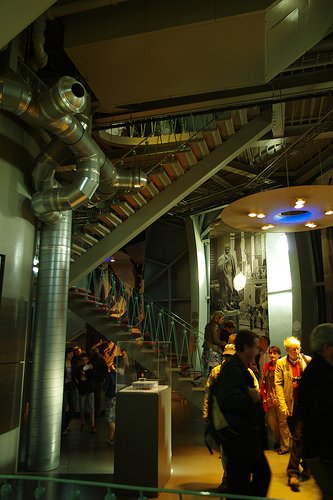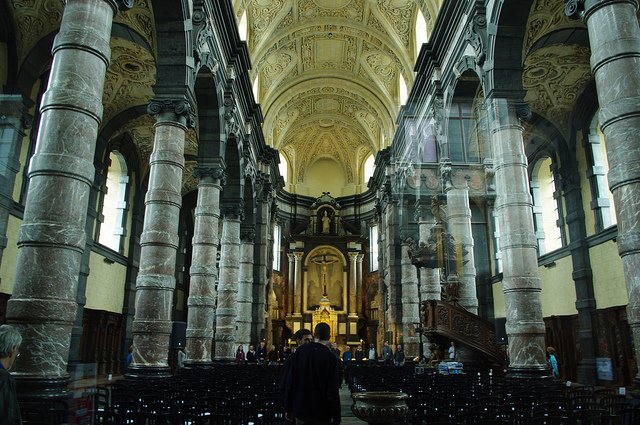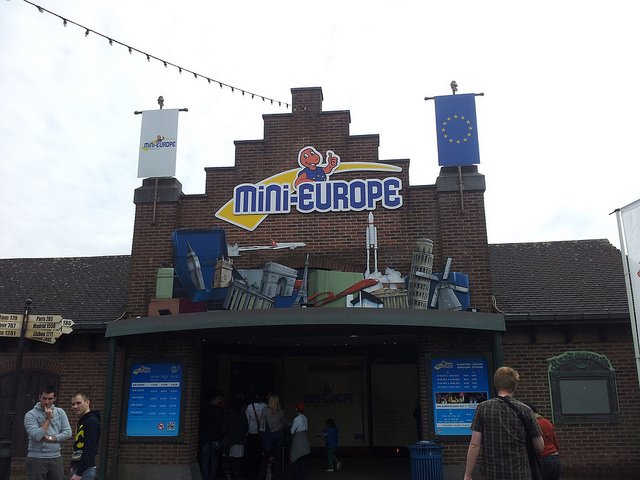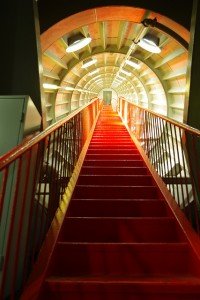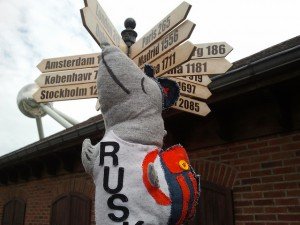Visiting Namur, a beautiful city in Wallonia
Before we traveled to Namur, we arrived to Belgium early in the morning, flying into the Brussels Airport where we caught a train into the Central Station of Brussels. This is where many trains connect to the Brussels hub of transportation. You can take a train to Amsterdam, Paris, as well as almost anywhere in Belgium. On this trip, we were headed to the south of Belgium, a region known as Wallonia. In this region, French is the official language, whereas in the north, Flemish is spoken. In Brussels, both languages can be found. Trains to Namur (our first stop) left fairly frequently, and we had no trouble catching a train within about an hour of our arrival at the station. (Just enough time to have a quick breakfast and find the platform). Wewere off to Namur!
The train to Namur took us a little over an hour, and we were able to enjoy the countryside of Wallonia. Oddly, the green fields and country towns reminded me a lot of the rural Pennsylvania of my youth. In Spain, you are likely to find anything from desert, to mountains, to forests as you drive around the country, but this had a different feeling and it was nice to just watch out the window as the towns and fields rushed by.
We had a bit of bad luck in terms of scheduling because upon our arrival in Namur, things were closing up for lunchtime. It was about 2pm, which in Spain, is the beginning of the lunch hour, but in Belgium most restaurants will tell you that the kitchen is no longer open. So we decided to head straight for our hotel, leave our bags and try to find something that was open to have a bite to eat. As we walked from the station, we got our first glimpse of Namur. What we saw was rather modern, homes and some local shops and restaurants. Rather modern, that is, until we came to the African Museum of Namur. This museum is housed in what appeared to be a former castle. The museum is actually the former Leopold barracks from the end of the 19th century. Inside you can find different documents and “souvenirs” from the Congo including geology, zoology, African agriculture and ethnology, as well as an extensive library. Unfortunately, we were unable to visit the museum, as it was closed during our stay in Namur.
After a quick lunch near the hotel we set off to see the famous Citadel, which, we were informed, was quite a walk uphill. The Citadel is found at the top of a rocky hill or cliff that overlooks the whole city. It’s a great place to get a birds eye view of the town of Namur, as well as a quiet place for a walk to enjoy the historic citadel and nature. Originally built in theMiddle Ages by the Merovingians, the idea was to put the citadel at the confluence of the Meuse and the Sambre Rivers. As we hiked up the hill we could already tell that the views would be impressive, and we were not disappointed. The Citadel itself is rather well conserved, considering the fact that it dates so far back in history. There is an amazing arched bridge, as well as some citadel walls that provide an idea of what a great look out spot this must have been.
There is also a visitors center at the citadel, and tours are offered if you want to learn more about the history of this centuries old citadel. We relied on information from online, due to lack of time, but I would definitely advise taking a tour to make the most of your visit to the citadel, as it has been witness to the continuous changes of power in Belgium due to its strategic position at the confluence of two rivers. Over the years, this citadel has been taken by no less than four separate countries, among them Spain, Austria, France and Holland. In fact, there were 9 other forts around the town of Namur to further protect this stronghold in terms of military power at the time of the 19th century.
After having visited the Citadel, which is by far the most visible monument in Namur, we crossed the Sambre River and passed the Former Meat Market, now the Archeological Museum. By this time of day (a bit past 5pm) all the museums were closed, but luckily, we could read a bit of the history on a little sign at the door. It turns out that the meat market, the “Halle Al´Chair” in French, is one of the rare and more beautiful examples of sixteenth century architecture. Over the years, the building has had various uses such as a school, shops, arsenal, hospital, protestant temple for the Dutch troops and a theater for the French troups. In 1806 it became property of the Town Hall and became the Archaeological Museum in the year 1855.
Seeing as how the musuems had closed, and we were a bit tired from having hiked up the hill to the citadel, we decided that it would be a perfect time to take a little break. We found a bar with some tables outside and tried out a beer that neither of us were familiar with. Its name “Jupiler” translates to Jupiter (like the planet) and we would soon find out that this brand is a blonde beer produced in the Wallonia region of Belgium. We sat there contemplating the people passing by and were able to take in a little bit of the ambiance of Namur, which, at this time of day was filled with families and students entering the shops and meeting with friends.
Fortified after our little rest, we continued on to visit the historic center of Namur, with its cobblestone streets. We came upon the town hall of Namur, located in the Square Leopold. The center of the square was a huge structure for exhibits. There were lots of people passing through the area, which is close to the main shopping streets and the more historic buildings of the town.
From Square Leopold we headed to the historic Church of St. Loup. This baroque style church was formerly known as Saint Ignace church and was built between the years 1621 and 1645 by the Jesuits. When we stopped by, there was a rehearsal going on for a choir performance, and we weren´t able to wander around as much as we would have liked, however the nave of the church was gorgeous, and should definitely be part of your trip. In a way, we felt lucky to have seen the choir rehearsing, as it added a special ambiance to the already beautiful and historic church.
Stepping out of the Church of St. Loup, we were left on one of the streets of the old town in Namur. These streets, with their brick buildings and cobble stones appear to be lifted from another time. There are plenty of little shops selling everything from yarn to lace, to macaroons and unique clothing or antiques. The contrast between this historic center and that of a town in Spain surprised me from an American perspective. While the stores were similar, and the people stopping to look in shop windows, or chat with shop keepers all seemed familiar, something about the style of the shops, and the way people interacted made it all delightfully new and foreign.
We stumbled out of the maze of streets in the historic section to find ourselves looking at the impressive Cathedral of Saint Aubain, which was built between the years 1751 and 1767. This church replaced one that had originally been built in the year 1047 by the Count of Namur, Albert II. The church itself is quite impressive from outside, with a dome-like cupola and an imposing façade, however inside I found the Church of St. Loupe to be more impressive. This is, of course, my personal opinion. The architecture is classical in style and dates to the 18th century. Regardless of your taste, its worth visiting the Cathedral on your trip to Namur.
By this point in the day, our feet were in desperate need of a rest before dinner, and we started to make our way back to the hotel. On the way, however, we happened upon a sweet shop that was selling authentic Belgian chocolates, and macaroons. Its true that many times on this trip, I found myself thinking I was actually in a small French town (mainly due to the fact that I have spent little time in France, and, of course, the language). The macaroons were another delicious part of my cultural confusion. This shop, called Darcis was located on Rue Haute Marcelle number 5, and the macaroons in the window were every bit as delicious as they looked. We tried one that was a mixture of coconut and chocolate, another that was strawberry chocolate and the last was raspberry flavored. This shop was a delightful end to our walk through Namur, a town we Ruskommend visiting with 4 boquerones for its history and its charm. A beautiful start to our trip in Wallonia.


